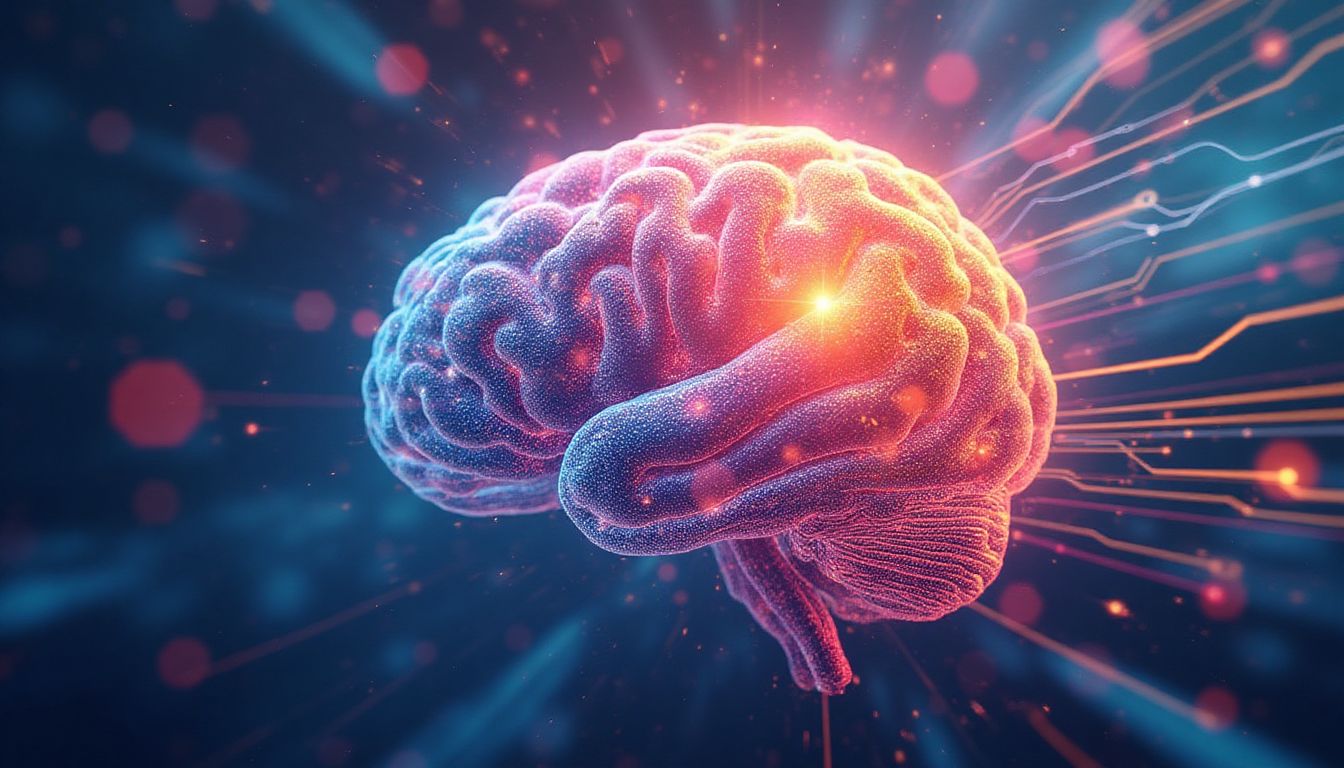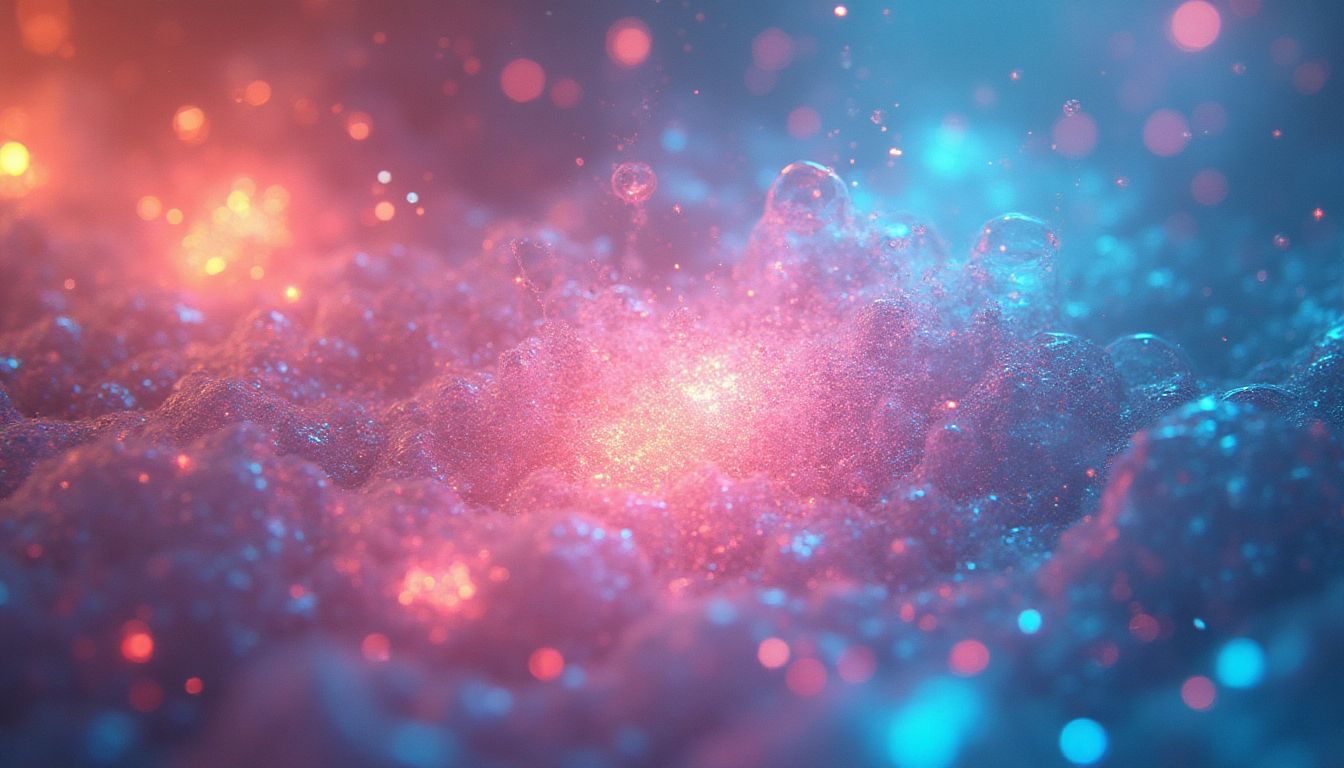Introduction: Breaking the Boundaries of Existence
The real voyage of discovery consists not in seeking new landscapes, but in having new eyes. – Marcel Proust. Proust's notion that discoveries are born from new perspectives resonates powerfully in today's world of artificial intelligence. When humans and computers join forces, we're navigating uncharted territories where AI isn’t just an assistant but a pioneer in revealing the secrets of the universe. Could the future of scientific breakthroughs rest not in our hands but in the circuits of our computers? AI’s rise presents a tantalizing possibility where it can potentially reveal unknown elements and redefine the periodic table.
The idea of AI taking over the role of detective in the hunt for new elements isn't just a futuristic dream; it's a burgeoning reality. While our traditional scientific methods have been steady companions, they now shake hands with advanced algorithms and machine learning to uncover what has eluded us for centuries. As AI becomes more adept, the familiar periodic table is set to experience a renaissance, expanding its borders beyond the imagination of even history's greatest minds, like Albert Einstein and Carl Sagan. But should we trust AI to determine the substances that could shape the future of our technology, medicine, and environment?
AI is rapidly transforming the landscape of material discovery by deploying machine learning algorithms to predict and simulate the properties and interactions of potential unknown elements, thus facilitating breakthroughs in the expansion of the periodic table.
The Evolution of the Periodic Table
The Periodic Table isn't just a chart with a bunch of squiggly letters and numbers; it's a story that's evolved over decades. From the mystical alchemists of yore, attempting to turn lead into gold, to Dmitri Mendeleev's orderly table of 63 elements in 1869, this journey is as intriguing as the mystery of a locked treasure chest. Why does this history matter? Because understanding the path that brought us here helps us envision where AI can take us next.
Historical Context
Tracing the history of element discovery is like following a treasure map drawn by nature and unraveling it piece by piece. Long before there was a periodic table, there was a quest—alchemists in the Middle Ages groping in the dark for legendary substances. Fast forward to the Age of Enlightenment, luminaries like Antoine Lavoisier challenged existing notions, laying the groundwork for modern chemistry. By the time Dmitri Mendeleev, a Russian chemist, published his version of the periodic table, it wasn't just an academic exercise; it was a predictive model that signaled what was yet to be discovered.
Mendeleev’s Predictions
Mendeleev didn't just see elements; he saw gaps. He predicted the existence and properties of elements that hadn't been discovered yet. It was like predicting the plot twist of a mystery novel before anyone else had read it—an intellectual triumph. Imagine if Mendeleev had an AI sidekick, analyzing data and running simulations. With AI's sophisticated data-crunching ability, we could identify patterns even more nuanced than Mendeleev’s, accelerating discoveries by eons.
Mendeleev had an uncanny knack for making insightful predictions, much like the legendary Neil deGrasse Tyson does today with astronomy. While Mendeleev relied on logic and immense knowledge, AI can enhance this approach with the precision of numbers and patterns, scanning immense databases to spot anomalies and probabilities, drawing inspiration from pioneers like Isaac Asimov and Stephen Hawking who’ve articulated visions of uncharted scientific frontiers.
AI and Material Science: A New Frontier
The realm of material science is to science what ice cream is to hot summer days—a sweet salvation. As humanity's incessant thirst for discovery pushes the frontier of knowledge, AI steps onto the scene, promising to revolutionize this field. The dexterity of AI in material science could indeed reshape our world. Unlike the tangible limitations of the past, with AI, we can imagine and explore possibilities limited only by our algorithms. This isn’t just about the thrill of discovery; it’s the bedrock of human advancement.
Computational Material Design
Imagine being able to predict the properties of materials before we even see them. AI isn't consulting a crystal ball; it's using algorithms. These mighty scripts can simulate and predict the characteristics of new materials. Models assess molecular compositions and interferential reactions. It’s almost like having a digital chef who can whip up a Michelin-star dish, minus the vinegar explosions. By understanding these interactions, AI models guide scientists like a road map guiding a treasure hunt for new materials.
Data-Driven Discoveries
In the era where data is the oil of the digital age, machine learning sifts through vast databases of existing materials. It recognizes patterns that human eyes might dismiss as unworthy doodles. From [Databases of the World](https://www.wolfram.com/data-repository/) to open-source treasures like the [Materials Project](https://materialsproject.org/), AI can mine trends and suggest new elements. It’s like having a cereal box that doesn’t just contain breakfast but a fortune-telling slip predicting the next best thing.
Challenges in Element Discovery
The quest to uncover new elements isn’t just a walk in the atomic park. It’s riddled with hurdles that make leaping over tall buildings in a single bound seem child's play. While our computational friends wield impressive power, certain constraints require tactful maneuvers to overcome.
Theoretical Constraints
Theoretical constraints in chemistry are like uncooperative block pieces in Tetris—they dictate the shape of what we can build. You see, current theories challenge the stability and existence of elements in overcrowded sections of the periodic table. AI, however, might just leverage our understanding and boldly go where no Mendeleev has gone before. Imagine algorithms that explore chemical possibilities as intrepidly as a Starship Enterprise on a mission. Dare we say, new theories could arise, ones that our forerunners never envisioned.
Experimental Barriers
While AI conjures images of robots blissfully churning out miracle compounds, reality checks requirements like budget spreadsheets. The cost and pretzel twists of technological limitations knot tightly into experimentation prospects. Synthesis of new materials isn’t always compatible with available tech or wallets. Perhaps AI should inspire frugality too, offering cost-efficient and innovative experiment methods. If we can’t have the Eighth Wonder of the World, a new element on the budget of a bean counter might just do.
Predictive Algorithms: Revolutionizing Discoveries
The wonderful world of element discovery has met its match with Artificial Intelligence. Predictive algorithms, born from the union of microchips and unyielding curiosity, are setting the stage. They are like detectives scouring an elemental crime scene, equipped with a set of advanced tools that make old methods seem like quill pens to the AI's laser printer. AI isn't just here to help; it's here to revolutionize how discoveries are made.
Machine Learning Techniques
Machine learning is like teaching a dog new tricks—only the dog is a computer, and the tricks involve high-level data analysis. Some of these techniques include:
- Neural Networks: They mimic how the human brain processes information, and they're great at recognizing patterns in data. Imagine Sherlock clearing a room with a glance, understanding every detail with lightning speed.
- Reinforcement Learning: Here, AI learns to make decisions by trial and error, like a labyrinth where only certain paths lead to cheesy rewards.
- Clustering: Think of it like sorting a pile of jellybeans by flavor, but with mountains of complex data.
By applying these techniques, AI can take gigantic leaps in the race to discover new elements, analyzing data faster than any human can.
Integrating AI with Traditional Methods
Why choose between brains and brawn when you can have both? This collaboration between AI and traditional element discovery methods is the dynamic duo of the science world. AI's ability to sift through extensive data complements human intuition and experience. Picture a well-equipped lab where AI handles the heavy lifting with data, while the human scientists add a dash of creativity and instinct to the mix. Think of how Batman works with Robin—efficiently and effectively, blending technology with experience for the best results.
Real-World Applications of AI-Discovered Elements
The shiny new world of AI-discovered elements isn't just for show; it's a game-changer. From the depths of cutting-edge science to leaps in everyday conveniences, the applications are as broad as they are compelling. Imagine the potential: AI, an unstoppable genie, offering up revolutionary materials across a digitized marketplace. Innovation now has a chauffeur, and it's called AI.
Applications in Electronics and Computing
Think about our phones becoming faster, laptops lighter, and even quantum computers more accessible. AI-discovered materials could transform screens, processors, and batteries. These advancements would allow for:
- Increased Efficiency: Faster processing chips and improved energy efficiency could advance both personal and industrial technology.
- Sustainability: New materials could be more environmentally friendly, supporting a future where tech and nature coexist harmoniously.
The world's tech companies—for example, Apple and Microsoft—could warmly embrace these new materials, driving them to an even more intertwined tech future.
Enhancements in Medicine
AI-discovered materials could lead to quantum leaps in health sciences:
- Drug Delivery Systems: Imagine medicine precisely targeted like a GPS-guided missile, with AI ensuring it reaches the exact location needing treatment.
- Medical Devices: Enhanced smart prosthetics or even improved medical imaging tools could result from stronger, lighter, and more adaptive materials.
This could improve patient outcomes, opening the door for breakthroughs in treatment options. Think of organizations like the World Health Organization (WHO) and National Health Service (NHS) exploring these findings to promote healthier societies worldwide. The marriage of AI and medicine marks a hopeful era, with possibilities as endless as our imagination.
AI Solutions: Revolutionizing Element Discovery
Artificial Intelligence has the potential to solve the challenges involved in discovering new elements and materials. With advanced computational techniques, machine learning algorithms, and vast datasets, AI can transform the landscape of material science. Here’s how AI can take charge and how a strategic roadmap can shape the future of elemental discovery.
To tackle the daunting task of discovering new elements, AI would undertake several systematic steps. First, comprehensive data infrastructure would be established to create a foundation for discovery. This would involve gathering existing research data from publications, lab results, and previous elemental studies. Available resources would draw upon vast databases like the ScienceDirect for access to numerous material science research articles.
Next, simulation and testing would follow, where AI would conduct virtual experiments to predict how various compounds would behave under specific conditions. Instead of relying solely on physical experimentation, AI can simulate outcomes, significantly reducing cost and time input. Tools akin to OpenMM could be utilized for molecular simulations.
Finally, collaborative intelligence would play a vital role. This would encourage synergies between AI systems and human scientists. AI could generate predictions, and researchers would validate these findings, integrating human insight with machine efficiency. Platforms like ResearchGate could facilitate networking and collaboration amongst researchers worldwide.
By merging these strategies, AI can revolutionize the process of element discovery and material innovation.
Action Schedule/Roadmap
To navigate the future of element discovery using AI, a meticulously planned roadmap is essential. Here’s a suggested action plan that spans from the initial kick-off to significant advancements in approximately two years:
Day 1: Project Kickoff
Form an interdisciplinary team of chemists, AI specialists, data analysts, and material scientists. Establish a collaborative ethos and define project goals.
Day 2: Data Collection Begins
Compile existing databases and gather research relevant to elemental properties and scientific literature, utilizing platforms like ACS Publications.
Day 3: Identify Key Collaborators
Engage with universities, such as MIT and Stanford University, and research institutes specializing in material science to build a collaborative network.
Week 1: Begin Simulation Tests
Run initial simulations using historical data to verify properties of known compounds and generate hypotheses for new materials.
Week 2: Data Analysis and Refinement
Refine predictive algorithms using machine learning techniques to enhance accuracy based on initial simulation results.
Week 3: Publish Preliminary Findings
Share insights with the scientific community through conferences and platforms like LinkedIn, soliciting feedback and collaboration opportunities.
Month 1: Focused Research and Development
Delve deeper into promising areas revealed through simulations to prioritize material discovery avenues.
Month 2: Experimental Verification
Perform laboratory experiments to confirm the attributes of new predicted compounds, applying techniques such as X-ray diffraction and spectroscopy.
Month 3: Assess Progress and Reassess Goals
After initial experimentation, evaluate results and adjust research directions based on findings. Documentation techniques and platforms like Notion can assist with organization.
Year 1: Full Scale Testing
Conduct comprehensive testing of newly predicted compounds to validate their properties and assess real-world applications.
Year 1.5: International Research Collaboration
Engage with international research teams and foster a collaborative environment for broader testing and diverse insights. Participation in global conferences can pave the way for new partnerships.
Year 2: Publication and Real-World Application
Prepare findings for publication in major scientific journals, such as Nature, and begin discussions with industry players for practical applications of newly discovered elements.
Conclusion: A New Era of Discovery Awaits
AI holds the transformative potential to reshape material science and revolutionize how we discover elements. As we stand at the nexus of creativity, technology, and knowledge, our ability to harness AI could lead to groundbreaking discoveries that were once deemed impossible. With every advancement through AI, we edge closer to solutions that address society's most pressing challenges. By embracing this technology and implementing the proposed roadmap, we can invite unexpected progress and inspire an era filled with new possibilities. The future is bright, with the promise of a new atomic age on the horizon, standing ready to elevate our human experience and foster innovation beyond imagination.
FAQ
Q1: What is an AI-discovered element?
An AI-discovered element is a type of chemical element that has been predicted or identified by artificial intelligence (AI) systems. Instead of human researchers doing all the hard work, AI algorithms analyze vast amounts of existing data and use simulations to suggest new elements. This innovative method allows for faster discovery and exploration. For more on AI's influence in science, check out Wikipedia on Artificial Intelligence.
Q2: How can AI change material sciences?
AI can significantly speed up the process of discovering new materials. It analyzes data about existing materials and predicts how new combinations might behave. This means researchers can quickly test ideas that could lead to groundbreaking innovations. The key benefits include:
- Faster discovery of new materials.
- Better prediction of material properties.
- Reduced costs associated with the experimental process.
Q3: Are there risks associated with AI discovering new elements?
While using AI for element discovery has many advantages, it also comes with some risks. These mainly involve safety and ethical considerations. Here’s how these risks can be addressed:
- Thorough safety assessments before experiments.
- Strict regulations and guidelines that researchers follow.
For insights on safety related to scientific research, you can refer to the National Library of Medicine.
Q4: What role do researchers play in this AI-driven discovery process?
Even though AI plays a significant role in discovery, human researchers are still crucial. Researchers validate the findings made by the AI, ensure safety protocols are met, and provide insights that an algorithm might not handle well. They are like the bridge between AI's predictions and real-world science. Learn more about the role of researchers in AI by visiting NCBI.
Q5: Will AI replace human scientists?
No, AI is not here to replace human scientists. Rather, it complements their abilities by helping to automate repetitive tasks. This allows scientists to focus more on big-picture ideas and complex experiments. The future will likely have a blend of AI and human intelligence working together. For more on the collaboration between AI and humans, you can check out this article on Wired.
Q6: How does AI predict new elements?
AI uses machine learning techniques, which are advanced algorithms that learn from data. These techniques analyze patterns, trends, and correlations in existing materials and their properties. By understanding these elements, AI can suggest new ones. It’s like having a super-smart assistant that spots connections faster than a human can!
Q7: What are some real-world applications of AI-discovered elements?
AI-discovered elements can lead to exciting developments in many fields, including:
- Electronics: New materials can improve the efficiency of devices we use every day, like smartphones and computers.
- Medicine: Discoveries in material science could revolutionize drug delivery systems, helping medicines work better with fewer side effects.
- Energy: Materials with unique properties can be crucial for developing advanced batteries or renewable energy technologies.
Q8: What types of AI techniques are used in element discovery?
Several exciting AI techniques are helpful for discovering new elements, including:
- Neural Networks: These algorithms simulate the human brain to identify complex patterns.
- Reinforcement Learning: This method teaches AI through trial and error, improving as it learns from past actions.
- Clustering: This technique groups similar data points to find trends.
These methods allow AI systems to become smarter and more efficient over time.
Wait! There's more...check out our gripping short story that continues the journey: The Shadows of the Unknown
Disclaimer: This article may contain affiliate links. If you click on these links and make a purchase, we may receive a commission at no additional cost to you. Our recommendations and reviews are always independent and objective, aiming to provide you with the best information and resources.
Get Exclusive Stories, Photos, Art & Offers - Subscribe Today!





























Post Comment
You must be logged in to post a comment.